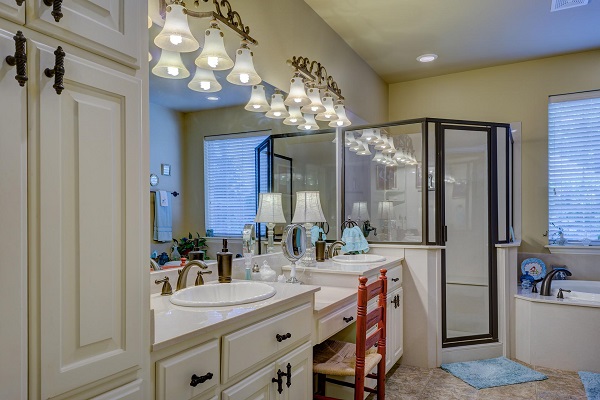
Appropriate interior lighting is a very important factor for the perfect feeling of well-being on your own four walls. If it’s too bright, it quickly looks uncomfortable. If it is too dark, this also creates a less than the comfortable atmosphere, and there is also a risk of injury. The art here lies in the right dosage. The same sensitivity is important when it comes to the color of the light. A pure white light makes even the most lovingly furnished living room look cool, while too warm a light in the study causes tiredness and headaches in many people. It is therefore important to choose the right number and type of light sources and to skillfully combine them with one another.
In order to illuminate an entire room, it is best to choose a generously light-emitting ceiling light, the light intensity of which can be regulated by a dimmer. To set accents or to illuminate individual objects – such as a showcase, a picture, or a seating area – spots are best suited, which thanks to their targeted lighting become part of the decoration. This also applies to indirect lighting and islands of light, which ensure the perfect distribution of light and shadow. A single luminaire for everything would not be able to create such an atmosphere. Therefore: Better to set several selective light accents – and for this, it is best to provide a sufficient number of sockets directly when planning the house in order to avoid long cable routes.
When it comes to areas where people read or work, sufficiently bright lighting should be chosen with a very clear focus on the area where the light is needed. Indirect light is not suitable here. This also applies to the work areas in the kitchen. These areas need sufficient light, but the potential glare on the eyes must be avoided.
The interior lighting can be excellently integrated into a smart home system. Not only can motion detectors be integrated, but the lighting can also be adjusted automatically or at the push of a button, eg to the brightness outside or to your personal mood. Smart systems can learn when residents get up in the morning or when they come home in the evening and switch on accordingly. In addition, an intelligent home can control its lights across different floors in such a way that when the occupants are absent, an inhabited house is simulated.
We at ORO Innovation not only plan and build your individual and massive dream house. We also have many ideas for lighting options for you and are at your side when it comes to Smart Home.
Send us your inquiries and we will be in contact shortly.
Follow us on:
Facebook | Instagram | Twitter | LinkedIn | Google My Business